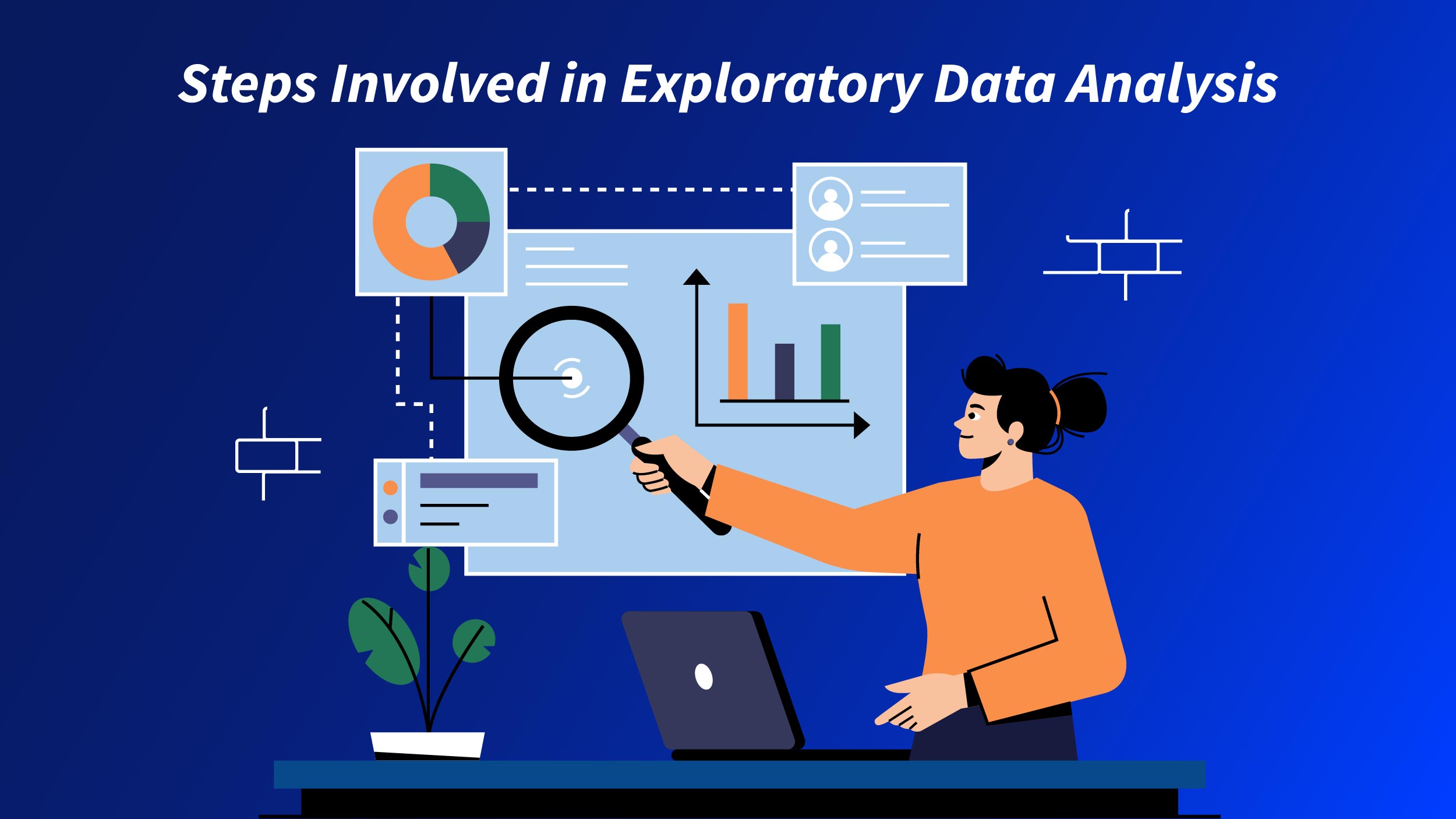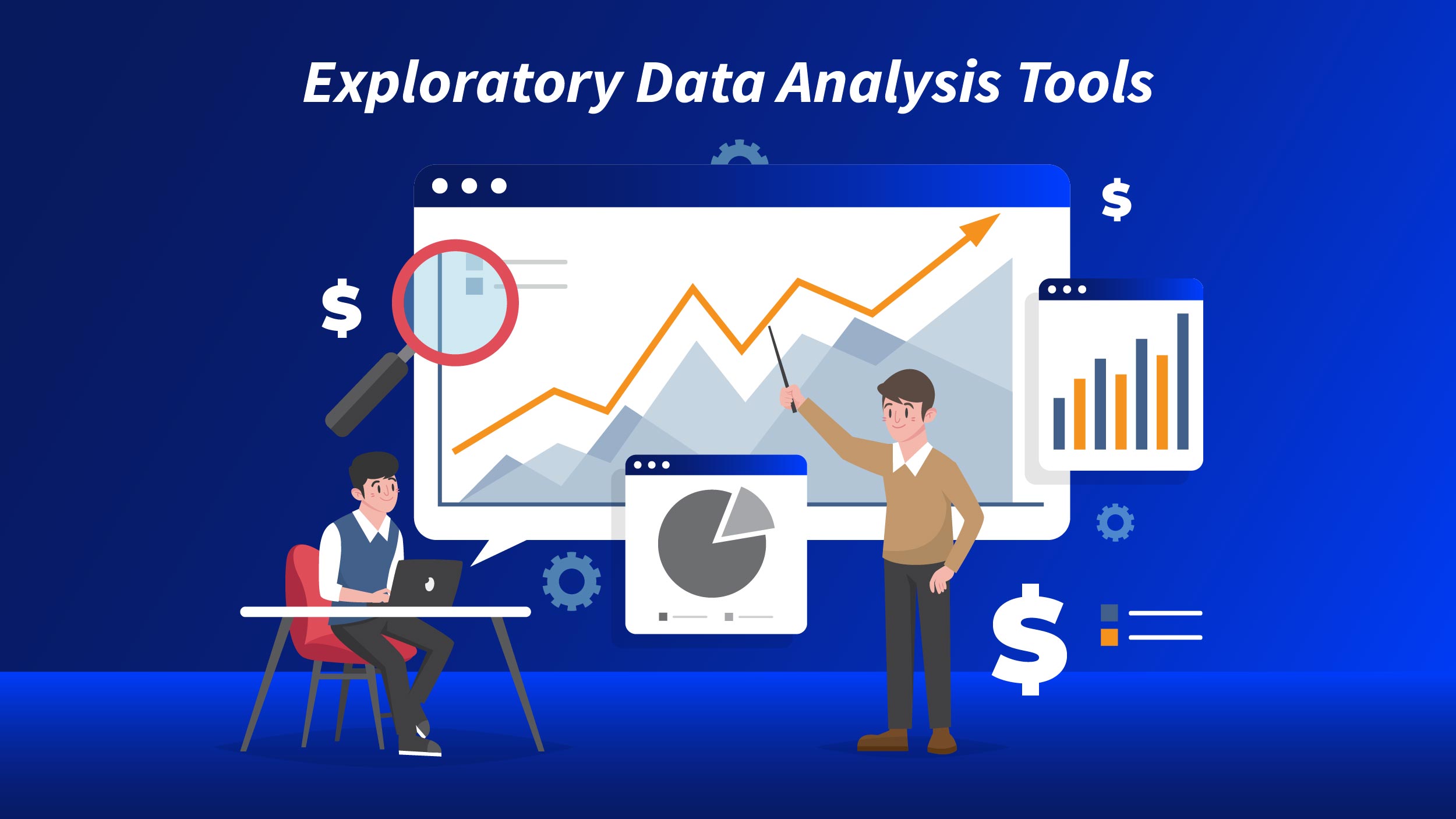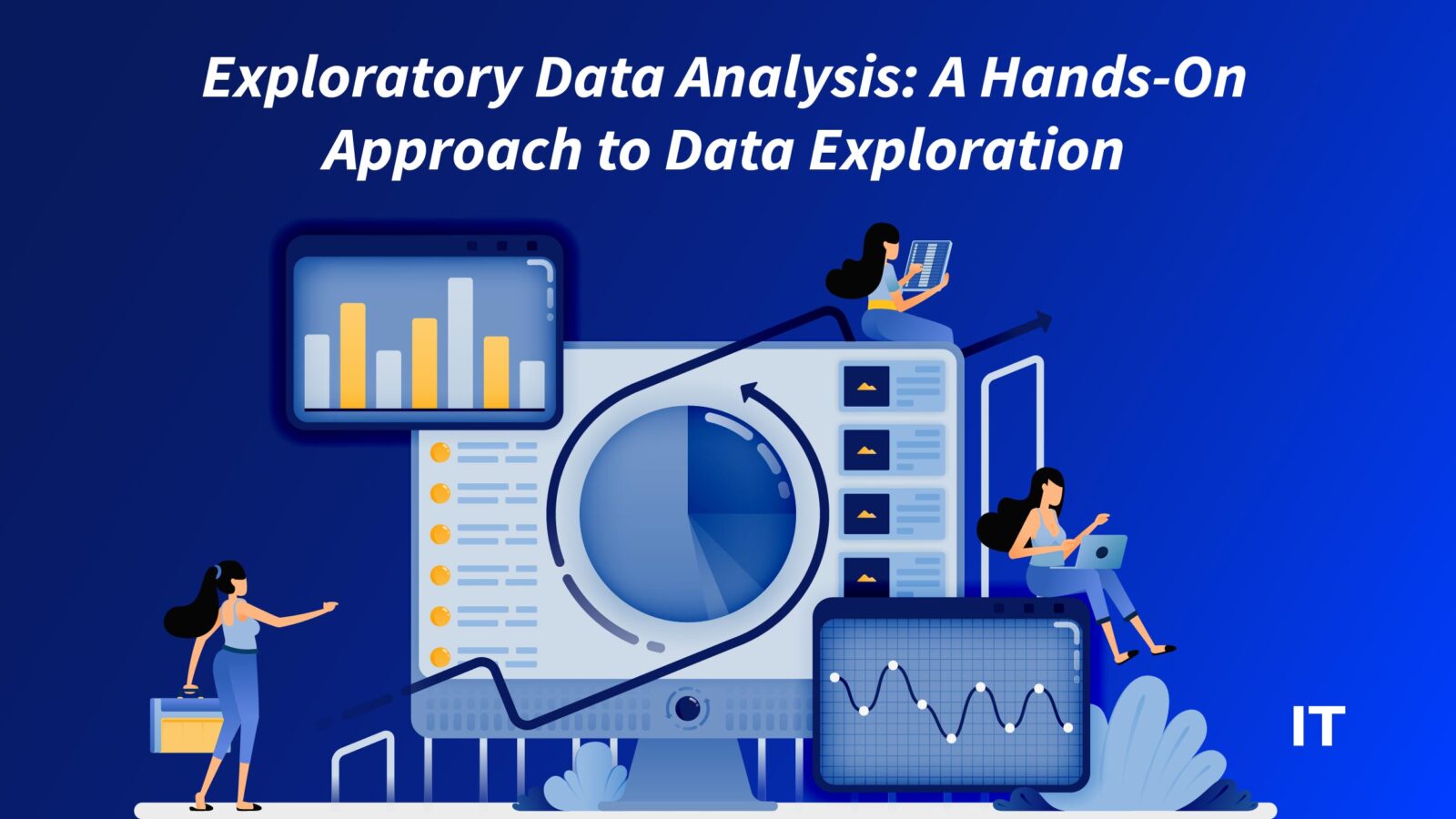Ever found yourself drowning in a sea of data, wondering where to start and how to make sense of it all? Enter exploratory data analysis (EDA), where numbers come to life, and insights are waiting to be discovered! Have you ever wished for a magic wand to unveil the stories hidden in your datasets? Spoiler alert: EDA might just be the closest thing to it.
So, what exactly is EDA, and why does it matter in the wild world of data science? Picture this – you’ve got a treasure trove of data, and EDA is the compass that guides you through the jungle of numbers, revealing patterns, stories, and hidden gems you never knew existed.
What is Exploratory Data Analysis?
Data scientists employ exploratory data analysis (EDA) as a means to thoroughly examine and comprehend data sets, effectively summarizing their key attributes. This approach commonly utilizes data visualization techniques to gain insights and identify relevant patterns, anomalies, and hypotheses, ultimately facilitating the manipulation of data sources in order to obtain desired answers. EDA plays a crucial role in assisting data scientists in making informed decisions, testing hypotheses, and validating assumptions.
EDA serves the purpose of uncovering insights from data beyond standard statistical modeling and hypothesis testing. Its main objective is to enhance the comprehension of variables within a dataset and the associations among them. Additionally, it aids in evaluating the suitability of statistical techniques for data analysis. Originally conceptualized by esteemed mathematician John Tukey during the 1970s, EDA techniques remain relevant and widely practiced in present-day data exploration.
What Makes Exploratory Data Analysis Crucial in Data Science?
The primary objective of exploratory data analysis (EDA) is to examine data thoroughly prior to forming any presumptions. EDA serves to uncover evident mistakes and gain a deeper comprehension of data patterns, identify outliers or unusual occurrences, and discover intriguing relationships among variables.
Data scientists have the ability to employ exploratory analysis in order to validate and apply their findings to various business objectives and targets. Additionally, this analysis assists stakeholders in ensuring their inquiries are aligned with their objectives. Exploratory analysis aids in addressing inquiries pertaining to standard deviations, categorical variables, and confidence intervals. Upon completion of exploratory analysis and the extraction of insights, its functionalities can be utilized for more advanced data analysis or modeling, such as machine learning.
Also Read: Why Are Feature Engineering Techniques Essential for Data Analysis?
Steps Involved in Exploratory Data Analysis
 EDA plays a vital role in comprehending and deriving valuable information from datasets. It comprises various essential stages to proficiently examine and delve into the data. Here are the main exploratory data analysis steps:
EDA plays a vital role in comprehending and deriving valuable information from datasets. It comprises various essential stages to proficiently examine and delve into the data. Here are the main exploratory data analysis steps:
Step 1: Data Collection
To initiate the EDA process, it is essential to gather the necessary data from a variety of sources, including surveys, social media platforms, customer reviews, and other pertinent outlets. Without obtaining an ample amount of pertinent data, it is not possible to commence with subsequent analysis.
Step 2: Data Cleaning
Once you have gathered the data, it is essential to refine and organize it before proceeding with the analysis. This process involves eliminating any errors, duplicates, or outliers present in the data while also ensuring that it is in a suitable format for effective analysis. Ensuring the cleanliness and readiness of the data is vital, as it guarantees the reliability and precision of the information utilized in the analysis.
Step 3: Finding all Variables and Understanding Them
It is crucial to grasp the variables in the dataset. This process entails recognizing and understanding the variables and their attributes, which serve as the basis for further analysis.
Step 4: Visualization and Exploration
By employing visualization methods, one can effectively analyze data and detect correlations, trends, and connections among various variables. This process entails utilizing tools like charts, tables, and graphs to visually represent the data and unveil any discernible patterns or relationships.
Step 5: Data Pre-processing and Feature Engineering
Data preprocessing and feature extraction are crucial initial stages that should be undertaken after data collection. These crucial steps involve preparing the gathered data for analysis, generating novel characteristics, and ensuring data cleanliness and reliability.
Step 6: Documentation
Ensuring thorough documentation of data is crucial, encompassing details such as the origin, collection methodology, cleansing procedures, and any modifications or manipulations executed. This comprehensive documentation plays a significant role in guaranteeing the accurate utilization and reproducibility of the data for subsequent studies.
Exploratory Data Analysis Tools
 Python and R stand out as the most prevalent tools in data science for conducting EDA. Python, an interpreted, object-oriented programming language, is a powerful tool for EDA, aiding in identifying missing values for machine learning. R, an open-source statistical computing language, is widely adopted by statisticians for data science in order to facilitate statistical observations and analysis. Examples of statistical functions and techniques that can be executed using exploratory data analysis tools comprise:
Python and R stand out as the most prevalent tools in data science for conducting EDA. Python, an interpreted, object-oriented programming language, is a powerful tool for EDA, aiding in identifying missing values for machine learning. R, an open-source statistical computing language, is widely adopted by statisticians for data science in order to facilitate statistical observations and analysis. Examples of statistical functions and techniques that can be executed using exploratory data analysis tools comprise:
- Employing clustering and dimension reduction techniques to visualize high-dimensional data effectively.
- Utilizing univariate visualization and summary statistics to analyze each field in the raw dataset.
- Applying bivariate visualizations and summary statistics to understand relationships between variables and the target variable.
- Exploring multivariate visualizations for insights into interactions among different data fields.
- Implementing K-means Clustering in unsupervised learning for grouping data points based on centroid distances, widely used in segmentation and pattern recognition.
- Utilizing predictive models like linear regression that leverage statistics to make data-driven predictions.
Summing it Up
The power of EDA extends far beyond mere statistical exploration; it is the key to unlocking meaningful insights and patterns within complex datasets. As we’ve explored the fundamentals and techniques of EDA, we emphasize the significance of leveraging tools like Python for seamless implementation. With Python’s versatility and efficiency, conducting
EDA becomes not just a task but an illuminating journey.
Upon looking at these real-world exploratory data analysis examples, we have learned the transformative impact it has on decision-making and problem-solving. Embrace the synergy of exploratory data analysis and Python to elevate your data science endeavors, unraveling the hidden stories within your datasets.


































